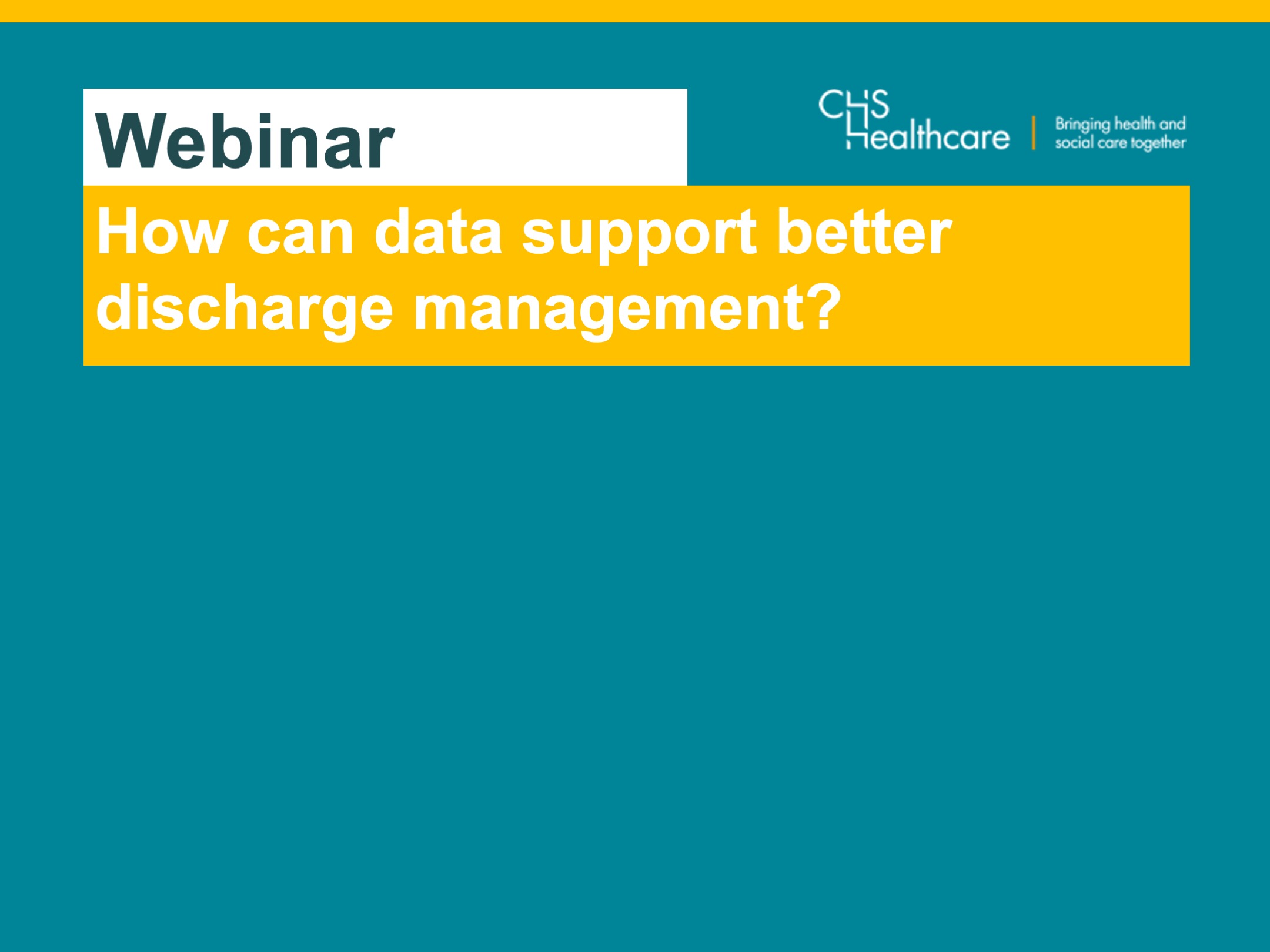CHS has undertaken a piece of work that digs into the underlying issues causing delayed hospital discharge. Through a survey of hospital workers and social care staff, and a roundtable with expert NHS leaders, we’ve sought to pinpoint issues and discuss the solutions.
The survey* revealed hospital workers believe almost half (43%) of their patients meet the NHS’ criteria for hospital discharge. With the NHS facing unprecedented pressures almost one in five hospital workers (17%) reported patient flow as the biggest problem they face.
It is well documented that early discharge planning from admission is required to help individuals get discharged as efficiently as possible. However, the survey revealed that in 31% of cases, hospital discharge is not discussed until treatment nears completion or once the patient is medically optimised. The survey also revealed that two in five hospital workers (40%) are unaware of the government’s ‘Discharge to Assess, Home First’ guidance, which is designed to avoid delays in care discharge.
Care home staff and managers responding to the survey reported that the top three factors contributing to delays in discharge from their perspective are paperwork, admin and bureaucracy (54%), no clear discharge planning pathway (48%), and delays in agreeing funding (47%). Staff also added that better discharge planning prior to patients being medically optimised would benefit those who are transferred to additional care (75%)
So how do we fix these issues?
Speaking at the roundtable, Liz Bruce, Joint Executive Director, Adult Social Care & Integrated Commissioning, Surrey, made the point that discharge is everybody’s business, not just It’s not just a section of the staff in the hospital or the discharge team in social care. A key point, underlining the need for collaboration, starting with system design that brings together knowledge and skills from across the entire health and care sector.
The NHS must also look beyond the numbers and manage patient flow through the system, ensuring complex cases are adequately resourced and planned.
Also at the roundtable, Lesley Watts, Chief Executive Officer at Chelsea and Westminster Hospital NHS Foundation Trust, told the group of the need for strategic planning from ICBs for complex cases, such as for people with mental health or physical rehabilitation needs or need social care support, and highlighted the significant benefit for patients when systems work together.
With unrelenting pressures felt across the system, accelerating patient flow is the immediate and glaring opportunity to protect patient outcomes and create sustainably in the NHS.
Our work over the last few weeks shines a light on the issues faced by hardworking health and social care staff, and the urgent need to re-engineer processes and drive greater co-ordinated collaboration to create a system that truly meets the needs of patients and helps create much needed capacity.
A system that works for patients needs hospital teams, social care services, families and providers working and planning together. Achieving this will increase capability through resource and scale, giving everyone the tools they need to make significant change.
*CHS Healthcare Hospital Discharge Survey (May 2022)









